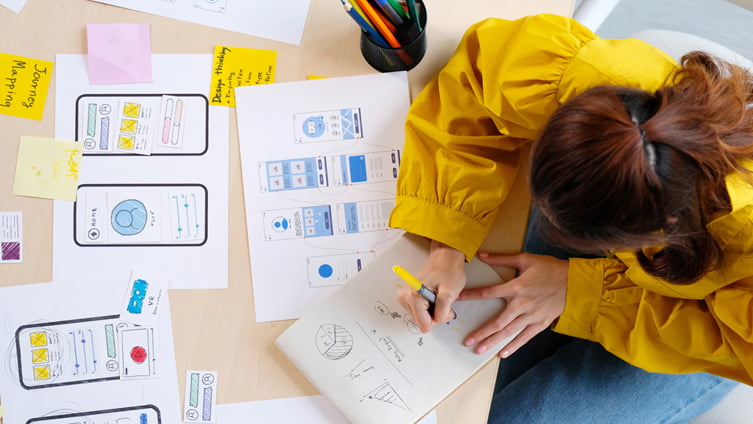Mobile Design
Mobile Design
We cultivate and expand brands by delivering top-notch design solutions, rooted in a comprehensive and profound comprehension of the specific brand.
Creative
User Friendly
Matches brand voice
Partners and Integration





FAQ’s
Have questions in mind?
A UX Designer plays a crucial role in shaping the user’s experience with a product or service. Here are some of their key responsibilities:
Understanding User Needs: They conduct user research to understand the needs, motivations, and behaviors of users. This often involves methods such as interviews, surveys, and usability testing.
Designing User Journeys: They map out the user’s journey with the product or service, identifying key touchpoints and opportunities for improvement.
Creating Service Blueprints: They create service blueprints that outline how different parts of the organization work together to deliver a seamless user experience.
Prototyping and Testing: They create prototypes of new service components and test them with users to gather feedback and iterate on the design.
Collaborating with Stakeholders: They work closely with various stakeholders, including product managers, developers, and business leaders, to ensure that the service design aligns with business goals and technical constraints.
Implementing and Evaluating Services: After the service components are implemented, they monitor and evaluate the service’s performance to ensure it meets user needs and continuously improve it based on user feedback.
In essence, a UX Service Designer aims to design services that are user-centered, efficient, and enjoyable to use. They focus not just on the digital aspects of a service, but also on the offline touchpoints and the overall service delivery.
A User Interface (UI) Designer plays a key role in creating the visual and interactive elements of a digital product that users interact with. Here are some of their main responsibilities:
Designing Interfaces: They design the layout and look of a software application’s user interface. This includes creating wireframes, mockups, and prototypes.
Creating Visual Elements: They design the visual elements of an interface, such as buttons, icons, and other graphical elements. They choose colors, fonts, and images that make the interface aesthetically pleasing and easy to use.
Ensuring Consistency: They create and maintain style guides and design systems to ensure a consistent look and feel across the product.
Collaborating with UX Designers: They work closely with UX (User Experience) designers to ensure that the visual design works well with the overall user experience.
Interaction Design: They design how users interact with the product, defining how the interface responds to user input.
Implementing Designs: They often work closely with developers to implement their designs in the final product, ensuring that the design is properly translated into code.
Testing and Iterating: They test their designs with users and use feedback to iterate and improve the design.
In essence, a UI Designer focuses on making a product’s interface visually appealing, intuitive, and easy to use. They play a crucial role in enhancing user satisfaction by improving the usability and accessibility of a product.
Explore our projects
See More

Owen Brothers Catering – PPC
Owen Brother’s Catering is a leading corporate catering business based in the UK. Specializing in Corporate and Event catering services, they were looking to expand their reach and increase their...

Client Review


Raft Furniture
Heinz Frye and Mick Quinn founded Raft in 1999 and remain Managing Directors today, alongside their families and a longstanding team of interior designers and furniture fanatics. Specialising in handmade...

















